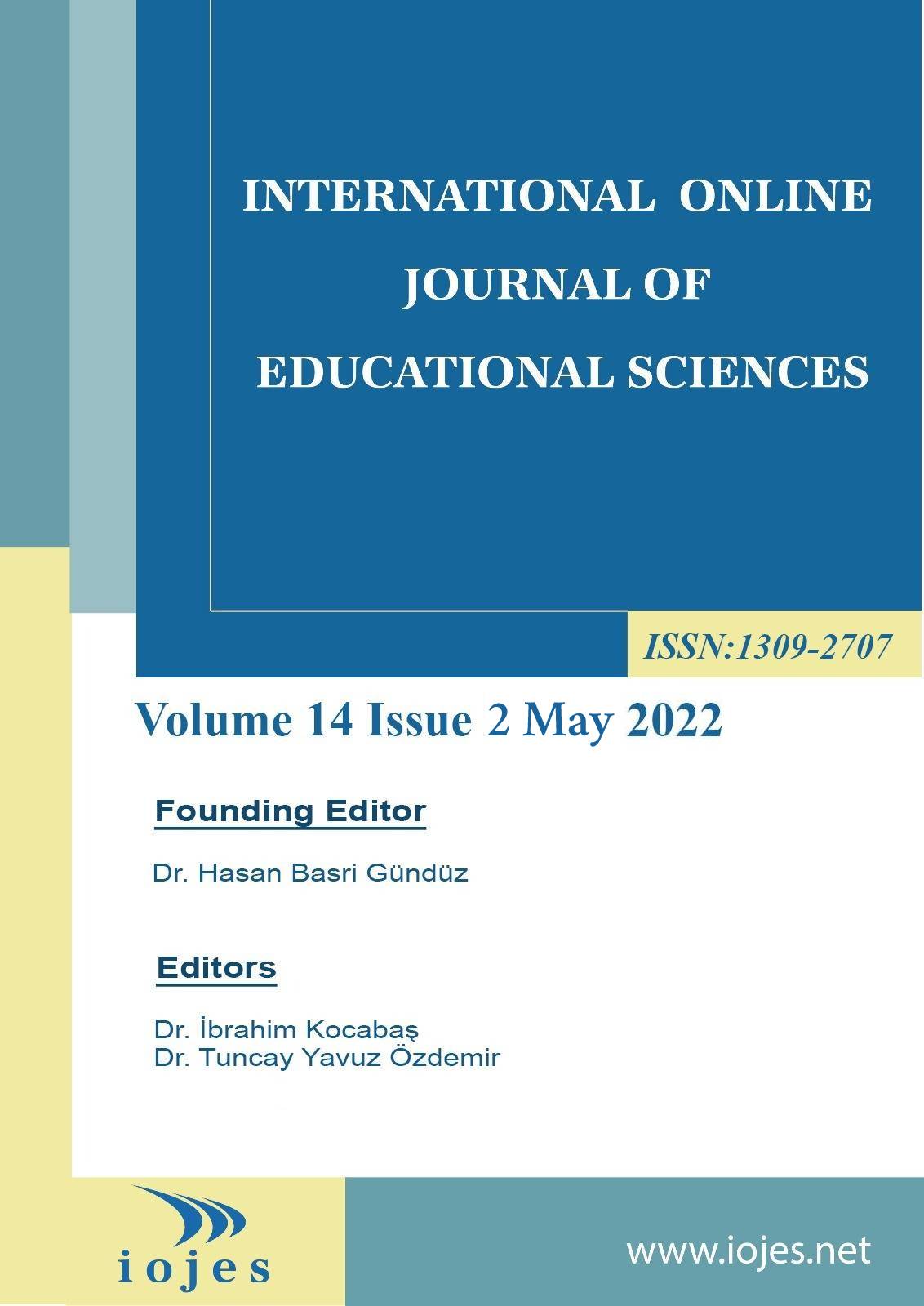Author :
Abstract
Keywords
Abstract
The aim of this research is to develop a valid and reliable scale to determine teachers' lateral thinking self-evaluation levels. For this purpose, the Six Hats Thinking Technique organized by De Bono (1986) and other thinking styles in the literature were reviwed and a 42-item draft scale was created and data was collected from the teachers. The study group of the research consists of 348 teachers working in public preschool institutions, primary schools, secondary schools and high schools in the 2019-2020 fall semester in schools on the European side of Istanbul. The data were collected by convenience sampling technique. EFA and CFA analysis were performed for the data obtained, and it was determined that 48.34% of the total variance of the scale, consisting of 6 dimensions and 20 items, was explained. The internal consistency coefficient of the scale was .710, .734 in the first factor, .688 in the second factor, .695 in the third factor, .703 in the fourth factor, .680 in the fifth factor and .698 in the sixth factor. According to EFA analysis, item loads are between .531 and .806. It was determined that the data were normally distributed in total and in all factors. According to the results of the CFA analysis, the fit indices of my scale are acceptable and at a good fit level. Based on these results, a valid and reliable scale was developed.
Keywords
- Akyüz, H. E. (2018). Yapı geçerliliği için doğrulayıcı faktör analizi: Uygulamalı bir çalışma. Bitlis Eren Üniversitesi Fen Bilimleri Dergisi, 7(2), 186-198.
- Athreya, B. H. & Mouza, C. (2016). Thinking skills for the digital generation: The development of thinking and learning in the age of information. Springer.
- Can, H. A. & Semerci, N. (2010). Altı şapkalı düşünme tekniğinin ilköğretim sosyal bilgiler dersinde öğrencilerin akademik başarısına etkisi. Eğitim ve Bilim, 32(145), 39-52.
- Cevizci, A. (2000). Felsefe sözlügü. Basim. Istanbul, Paradigma Yayinlari.
- Cottrell, S. (2019). The study skills handbook. Macmillan International Higher Education.
- De Bono, E. (1969). Information processing and new ideas-lateral and vertical thinking. The Journal of Creative Behavior, 3(3), 159-171.
- De Bono, E. (1985). The CoRT thinking program. Thinking and learning skills, 1, 363-378.
- De Bono, E. (2017). Six thinking hats. Penguin UK.
- De Bono, E. (1985). DeBono's thinking course. New York: Facts on File Publications.
- De Bono, E. (1986). Sıx Thınkıng hats. England: Viking.
- De Bono, E. & Zimbalist, E. (1970). Lateral thinking. London: Penguin.
- Doğan, N., Soysal, S., & Karaman, H. (2017). Aynı örnekleme açımlayıcı ve doğrulayıcı faktör analizi uygulanabilir mi?. Pegem Atıf İndeksi, 373-400.
- Erkorkmaz, Ü., Etikan, İ., Demir, O., Özdamar, K. ve Sanisoğlu, S. Y. (2013). Doğrulayıcı faktör analizi ve uyum indeksleri. Turkiye Klinikleri Journal of Medical Sciences, 33(1), 210-223.
- Field, A. P. (2005). Is the meta-analysis of correlation coefficients accurate when population correlations vary?. Psychological methods, 10(4), 444.
- Gorsuch, R. L. (1997). Exploratory factor analysis: Its role in item analysis. Journal of personality assessment, 68(3), 532-560.
- Güneş, F. (2012). Öğrencilerin düşünme becerilerini geliştirme. Türklük Bilimi Araştırmaları, (32), 127-146.
- Hinkin, T. R. (1995). A review of scale development practices in the study of organizations. Journal of management, 21(5), 967-988.
- Karasar, N. (2005). Bilimsel araştırma yöntemi (17. Baskı). Ankara: Nobel yayın dağıtım.
- Liang, S. (2014). Lateral thinking: using reativity to get ahead. https://blog.sandglaz.com/lateral-thinking-using-creativity-to-get- ahead. [Erişim: 24.03.2022].
- Lipman, M. (2003). Thinking in education. Cambridge University Press.
- Perkins, D. N. (1987). Thinking frames: An integrative perspective on teaching cognitive skills. Teaching thinking skills: Theory and practice, 41-61.
- Semerci, Ç. (2016). Developing A Lateral Thinking Disposition (Latd) Scale: A Validity and Reliability Study/Yanal Düşünme Eğilimi (YADE) Ölçeğinin Geliştirilmesi: Geçerlik ve Güvenirlik Çalışması. Eğitimde Kuram ve Uygulama, 12(1), 358-371.
- Sloane, P. (2016). Lateral Thinking In Brand Marketing. http://www.brandquarterly.com/ lateral-thinking-in- brand-marketing. [Erişim: 23.03.2022].
- Snook, S. C. & Gorsuch, R. L. (1989). Component analysis versus common factor analysis: A Monte Carlo study. Psychological bulletin, 106(1), 148.
- Tabachnick, B. G. & Fidell, L. S. (2007). Using Multivariate Statistics. Fifth Edition. Pearson: AB.
- TDK. (2020). Güncel Türkçe Sözlük, (Hata! Köprü başvurusu geçerli değil.. [Erişim:20.10.2020].
- Yıldırım, B. (2019). Altı Şapkalı Düşünme Tekniği Ölçeği: Geçerlik ve Güvenirlik Çalışması 14. Uluslararası Eğitim Yönetimi Kongresi Özet Bildiri Kitapçığı, s.326-327. 2-4 Mayıs 2019, Çeşme-İzmir, Türkiye.





